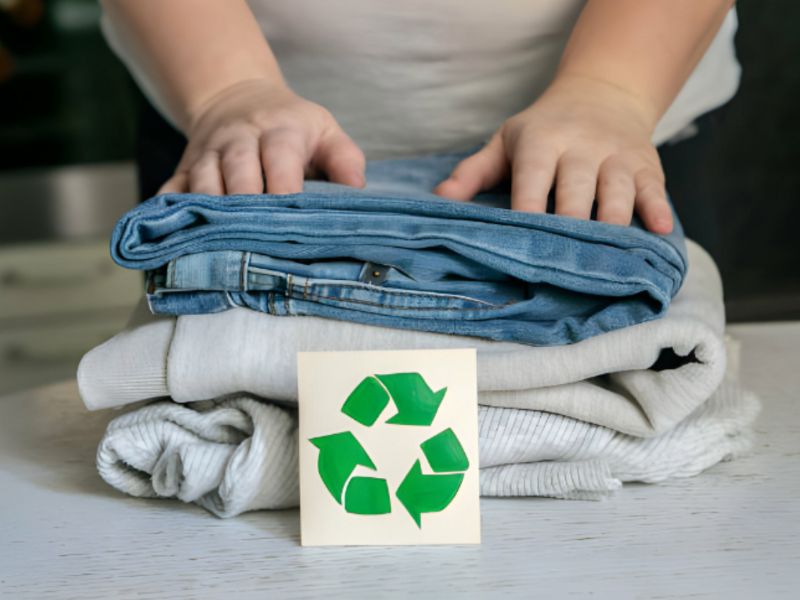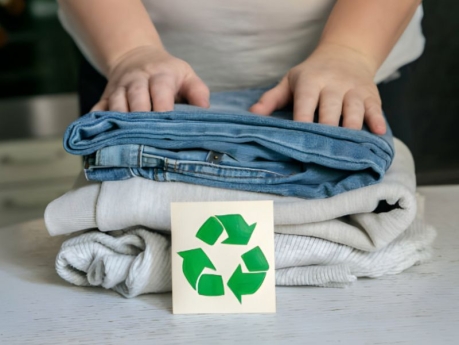What is life cycle analysis?
Life cycle analysis is a design methodology focused on the evaluation of the environmental impact generated by a product or service in each of its phases of existence.
This environmental analysis assesses aspects such as extraction, production, distribution and even use with respect to a product or service. And one of the issues that has become more relevant in recent years is the prospect of reuse or recycling of that element.
This research is not based on a subjective assessment, but rather bases its results on a quantified study, which allows for a more precise understanding of aspects such as environmental emissions.

In recent years, companies have become more conscious of researching the life cycle of products with the intention of making them more environmentally friendly.
Even a recent Google study highlighted sustainability as a digital marketing trend for 2024. But beyond awareness, there are regulations that support these measures, such as the international ISO 14044 standards.
It should be noted that this product life cycle assessment considers absolutely every aspect, including the packaging techniques used and the handling of waste once the product has reached the end of its useful life.
THE MAIN PHASES OF LIFE-CYCLE ASSESSMENT
As this is a very comprehensive study, a segmented assessment is necessary. To achieve this, life cycle analysis outlines a series of guidelines covering each of the phases of production, use and completion of the service product.
Definition of goal and scope
In this first step, everything that needs to be studied is defined in accordance with the objectives set for carrying out the analysis.
For example, depending on the life cycle study of a product, a company can make a decision such as substituting some production material for another that is much more environmentally friendly.
The purpose should always be focused both on achieving a very detailed diagnosis and on identifying opportunities for improvement and thus reducing the environmental footprint.
In turn, this phase of the research also delimits the limits of the system, or those challenges to which the company will later have to outline possible solutions.
For example, in sustainable fashion, this type of assessment can determine complicated aspects for the company, such as the management of production costs.
However, by having such a precise diagnosis and setting objectives in advance, a very good basis for solutions is obtained.
Inventory analysis
Known as the life cycle inventory, it is a very detailed compilation on the management of all the stages that consolidate both the development and the use of a product or service.
Of course, depending on the result obtained (as each product or good is different) these phases may vary.
However, in most cases it encompasses aspects such as the extraction of raw materials, techniques used in production, distribution measures including packaging and final disposal.
From the perspective of environmental management, some natural resources are considered, as well as the relationship of the product with its environment based on the proportion of atmospheric emissions or waste that its production and use may entail.
It should be taken into account that this study is not only based on the product as such, but on everything that surrounds it.
For example, Amazon, as part of its sustainable practices, has decided to reduce packaging materials to avoid generating excess waste. And other companies have followed the same initiative, such as the trainer giant Nike.
Impact assessment
During this phase of the product life cycle analysis, the assessment concentrates on identifying the environmental effects related to the inputs and outputs of the inventory.
For this guideline to be successful, it is necessary that the previous point has been handled in an optimal way, in order to identify everything related to the inventory and not to lose sight of any detail.
The environmental impact analysis and assessment of a product or service can be an extremely complicated task, but the reasons for carrying it out with the utmost commitment and diligence are obvious.

To support this part of the analysis, specialists use quantitative methods to identify the impact on aspects such as resource depletion or toxicity.
This shows that it is an analysis that not only delimits the environmental impact but also seeks to promote production measures that are much safer for the environment and society.
In recent years, product life cycle assessment has been largely focused on quantitatively identifying the impacts related to distressing environmental change.
Interpretation
Once all phases of the life cycle analysis have been covered and all results are available, the interpretation process should begin.
The interpretation should not only organise the results obtained, but should also be complemented by the objectives defined at the beginning of the process.
For it is precisely this that makes it possible to define the areas in which the process, be it production, distribution or even use of a product or service, should be improved in accordance with sustainability.
All of this is concentrated in a report in which data has been established to support all the approaches defined to minimise the environmental impact and create a better ecological awareness within the company or industry.
WHAT IS PRODUCT LIFE CYCLE ANALYSIS?
Life cycle analysis is a comprehensive study that aims to identify the environmental impacts or burdens related to a product or service in each of its phases.
Its development helps to identify which stages are the most critical at an environmental level, so that certain decisions can be taken to achieve a positive turnaround of the situation.
Companies must be transparent with this type of study, and it should be noted that its optimal management also offers advantages such as improvements in corporate image and even brand loyalty.
PHASES OF PRODUCT LIFE CYCLES
In the following, we will introduce you to the product life cycle phases and which ones are most commonly associated with the textile industry.
Development
It is the whole process involved in production, from the selection of raw materials to the techniques used to process the base materials.
In recent eco-friendly fashion trends, the focus has been on materials whose content is mostly from natural sources, thus avoiding the overexploitation of plastic.
However, one of the main challenges facing ethical fashion is the cost of production, which can affect the accessibility of certain products.
But as the years go by and technology stays the course, it is estimated that it will be able to steadily improve. This is perhaps the most important part of analysing and managing the environmental impact of fashion.
Introduction
During this phase, the main characteristic is the initial launch of the product on the market, i.e. after the production of garments.
It is the first approach that this "good" has with consumers, although it will not always end in a sale, accessibility and visibility are still key points in the purchasing process.
In the event that the product is not being well received in the market, it is necessary to invest in the planning and execution of marketing actions.
Growth
This phase is characterised by the beginning of the acceleration of sales and the initial acquisition of a return on the investments made in the previous phases.
One of the biggest challenges during this process is the efforts to stay ahead of the competition. So it is necessary to highlight the value aspects of the product to achieve differentiation and capture the interest of potential consumers.
Growth is an initial phase that, as long as it is managed strategically, can help to improve the brand's image, something that is absolutely indispensable in fashion design.
Maturity
The increase in product usage is what defines the beginning of this stage, usually the competition is much fiercer.
In sustainable fashion management, this phase is an ideal time to understand customer satisfaction, and to obtain a series of metrics that can help to obtain constant improvements and to promote responsible consumption.
Decline
Decline is the last phase in the product life cycle, at this point managers have two options firstly to organise and promote a new marketing strategy drive to increase sales.
But secondly, there is the option to withdraw the goods from the market and develop a new range that is in line with the latest expectations and real needs of the customer today.
This is a decisive phase for companies seeking to reduce the environmental impact of fashion. But of course, diligent management of this process also helps to reduce economic losses.
IMPACT CATEGORIES
Impact categories or indicators are an essential part of obtaining results and interpreting them to define the environmental impact generated by a product or service.
Their assessment must be quantitative as they analyse and measure aspects that can be represented in this way, such as acidification, which is nothing more than a measure of acid equivalent emissions.
Climate change
Over time, some irrefutable causes of climate change have been identified, such as pollution and associated bad consumption practices.
In this sense, in order to reduce the environmental impact it is necessary for companies to undertake the task of measuring the amount of energy that is necessary for the manufacture of a product and the management of the waste associated with this process.
Eutrophication
It is one of the main problems related to the process of water pollution, where excessive nutrient production within an aquatic ecosystem often leads to a lack of sanitation.
Acidification
When a development process involves the use of chemicals, the study of acidification becomes indispensable. This relates both to the management of environmental analysis and to defining the safety of a product in use.
Sustainable fashion trends focus on reducing chemical pollution and combating high rates of acidification of the earth's soil.
Smog formation
It is a form of environmental pollution that causes damage to the air when it is mixed with airborne particles and other toxic substances that reach the atmosphere. Industrialisation has played a major role in this problem over the years.
Particles
The study of particulate pollutants is essential in both production and distribution, taking into account the measures for the transfer of products and the sources of contamination that this may entail.
Ozone depletion
Greenhouse gases are one of the main contributors to the destruction of the ozone layer. So, in circular and eco-friendly fashion it has been of vital importance to identify measures that can reduce these emissions.
HOW IS DATA COLLECTED FOR LIFE CYCLE ASSESSMENT?
Taking into consideration all that has been said so far, it should be noted that data collection is carried out through the application of multiple measures that assess the environmental relationship.
For this, it is essential to have defined the impact categories and characterisation models in order to issue the subsequent calculation of the results according to each item.
WHAT ARE THE STEPS INVOLVED IN CONDUCTING A LIFE CYCLE ANALYSIS STUDY?
First of all the specialists have to work on the definition of the objective and scope, then they have to delimit the life cycle inventory.
Once these steps have been covered, the life cycle impact assessment has to be carried out and its subsequent reliable interpretation has to be performed.
Depending on the study, additional elements for interpretation may also be considered, such as normalisation, weighting and data quality analysis.
IN CONCLUSION, WHAT IS THE IMPORTANCE OF LIFE CYCLE ANALYSIS?
Although this is a rather complicated process that involves assessing multiple aspects, part of its objectives focus on increasing efficiency in the production, packaging, distribution, use and waste management of a product or service.





Users Reviews